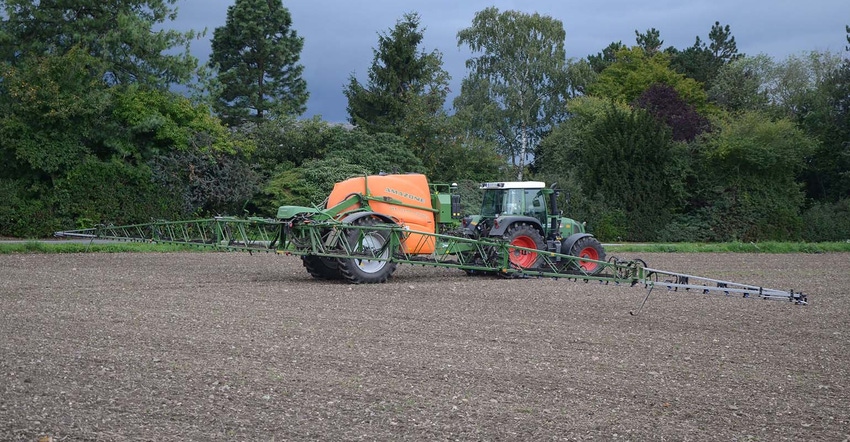
When a weed or disease infestation occurs, it hopefully doesn't occur throughout the entire field. The question is: how do you manage a patch of weeds or disease-infected area in a way that's economical and doesn't result in spraying a pesticide where it isn't needed?
Bayer Crop Science has noted it is committed to investing at least €200 million in its Digital Farming business between 2015 and 2020. As part of that commitment, this year more than 500 farmers around the world have tested Bayer's Field Manager tool, which provides a way to site-specifically manage weeds and diseases in the field.
At the Future of Farming Summit hosted by Bayer Crop Science, the company demonstrated how this tool can be used to apply herbicides or fungicides in a site-specific manner on the historic Laacher Hof farm near Monheim in Germany
Using Field Manager's zone spray function, growers can order aerial imagery collected by unmanned aerial system (UAS) – including both visible and near-infrared – and use it to profile their fields for weed or disease infestation.
Under the best weather conditions, growers can receive images every two days using the technology, with the ability to download a variable map for their spray applications around the T2 (flag leaf) stage in winter wheat.
"We're trying to really optimize the grower's second application," says Roslyn Chua, commercialization manager of digital farming at Bayer Crop Science.
The grower can download a variable dosage map onto a USB drive to plug into the sprayer's terminal. The terminal uploads the map and sends a command to the sprayer to automatically apply the appropriate amount on certain acres – and this includes variable dose applications as well as simple on/off applications. This way, nozzles will turn off when the sprayer passes over certain areas of the field, and turn on when passing over patches with more weeds or disease.

OPTIMIZING APPLICATIONS: Under the best weather conditions, growers can receive images every two days using the technology, with the ability to download a variable map for their spray applications around the T2 (flag leaf) stage in winter wheat.
Trials ongoing
However, Chua notes more data is needed before an official launch.
While herbicide trials in soybeans have mostly taken place in Brazil, ongoing trials show potential to save herbicide through this technology. "There are definitely acres you need to spray in some fields and areas that you don't need to spray as much," says Chua. "So far, trials show you could save significantly on your second herbicide application."
Trials in North America have largely been centered on fungicide applications in canola in North Dakota and Canada. "The logic is spray higher-yielding areas because they're more prone to sclerotinia [stem rot] in canola," says Chua.
The Field Manager tool includes a spray timer function that uses data like location, crop rotation, planting date, variety and other agronomic information along with local weather data to determine the potential disease risk and optimum time to apply fungicide. It also includes a status function to keep track of growth stages, application timings, and pesticide residual activity.
Currently, the technology is still being tested in canola and corn in the U.S. as well as in soybeans in Brazil. However, an official launch is possible in 2018, according to Bayer.
About the Author(s)
You May Also Like






